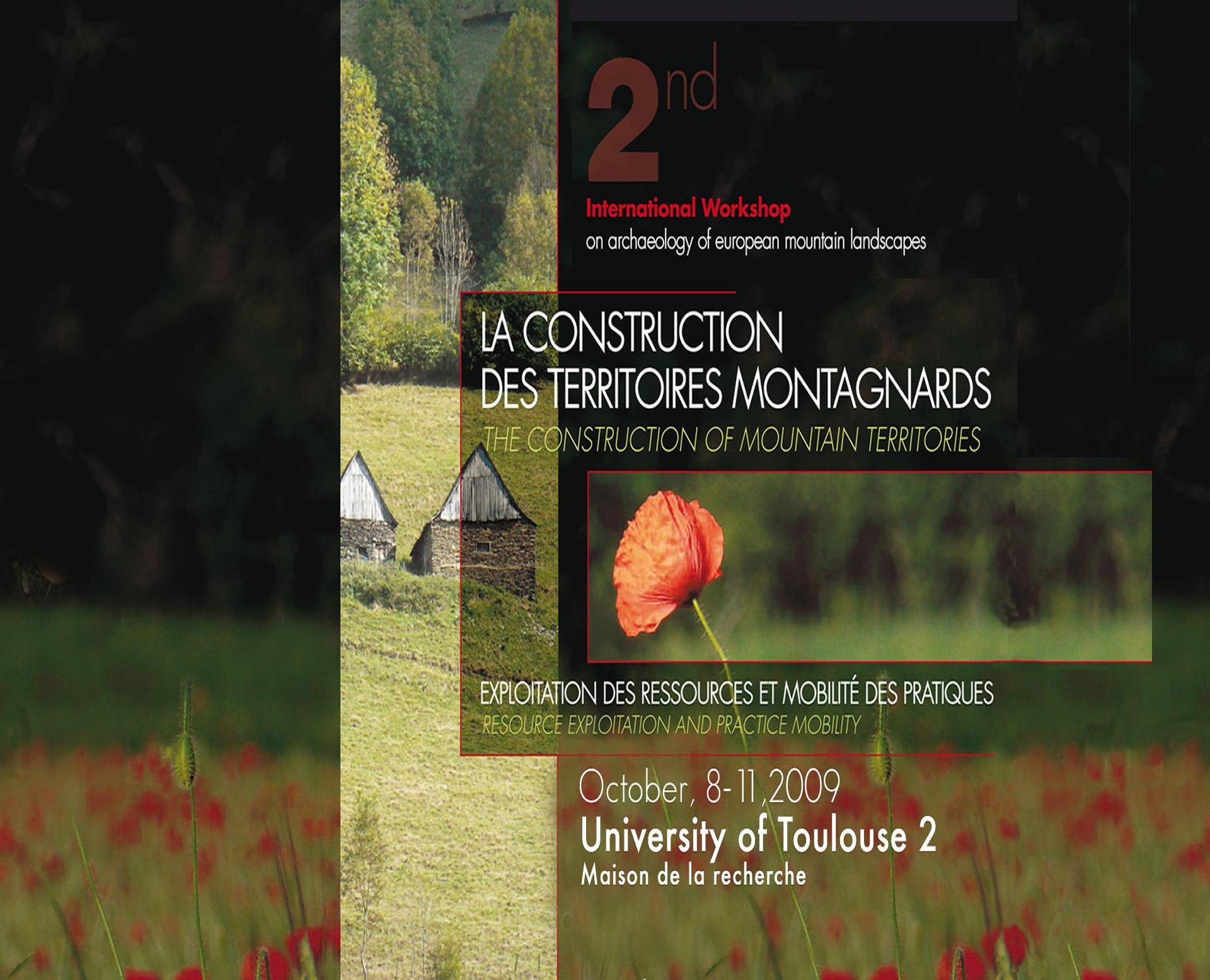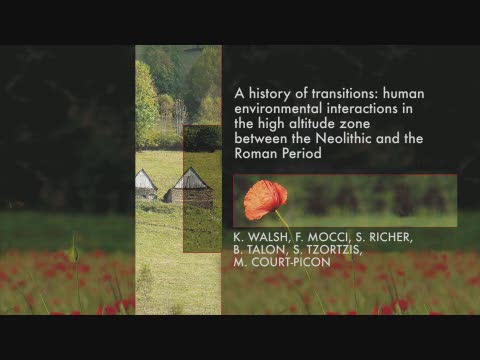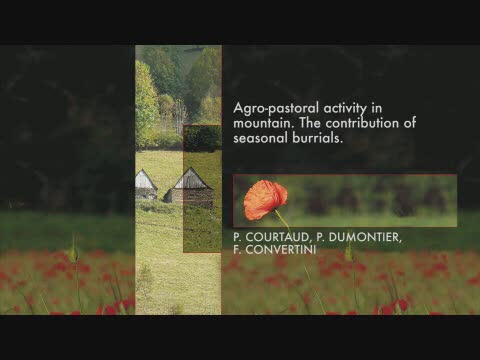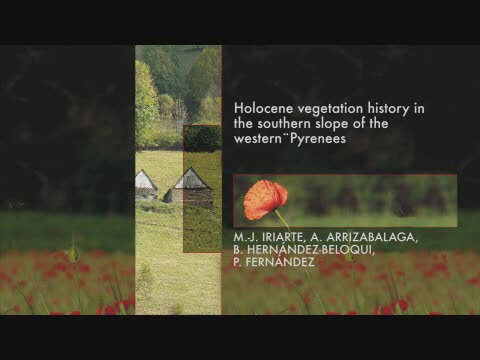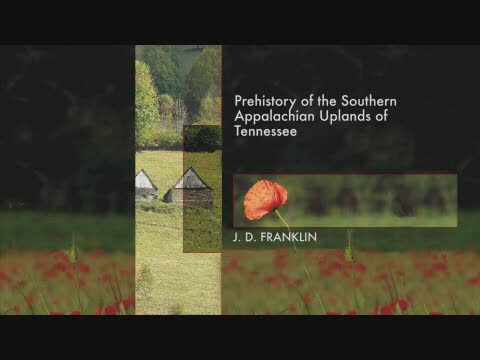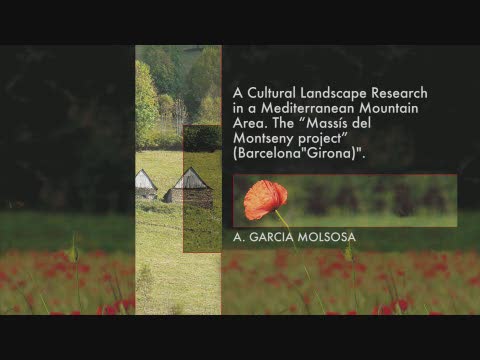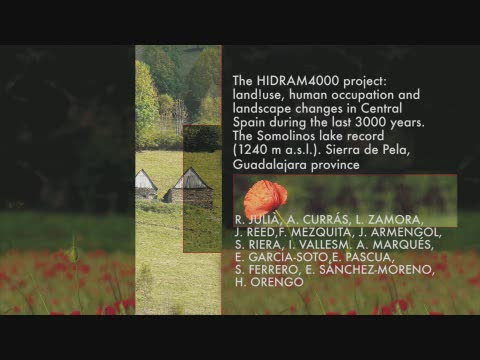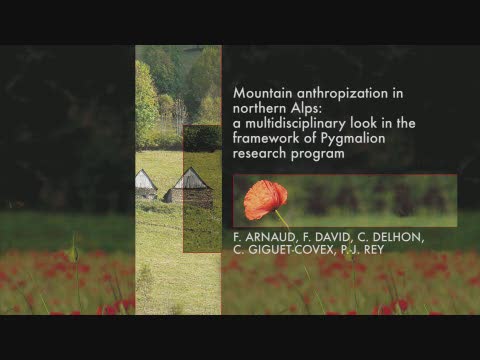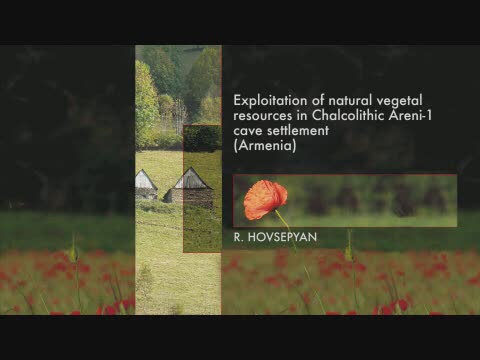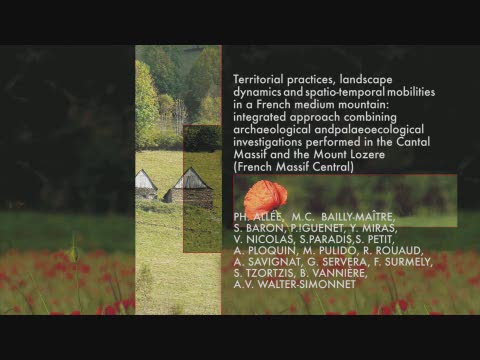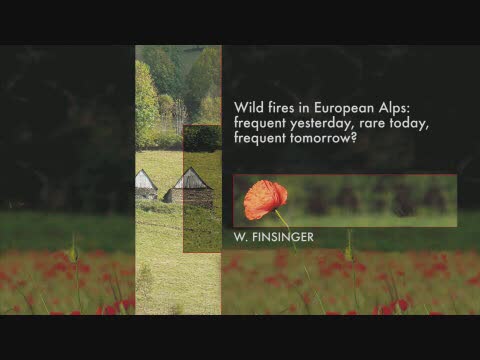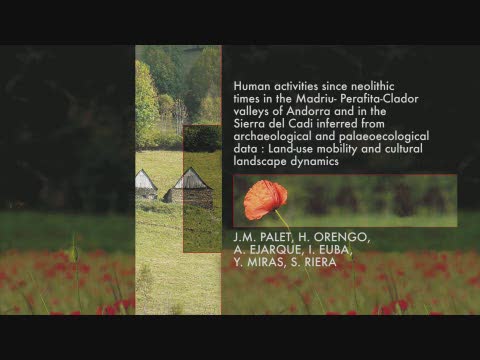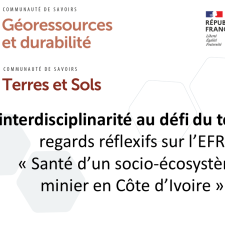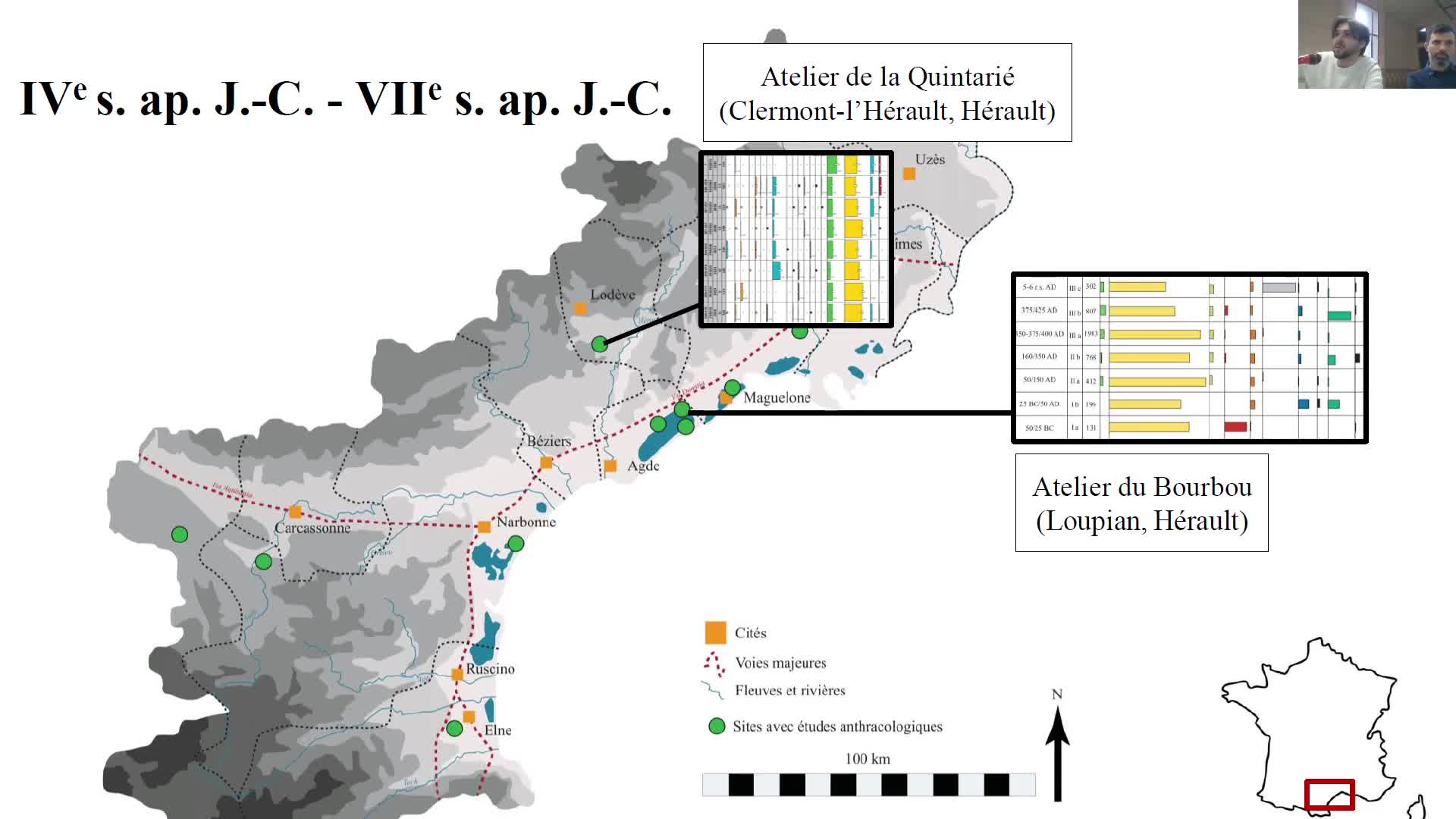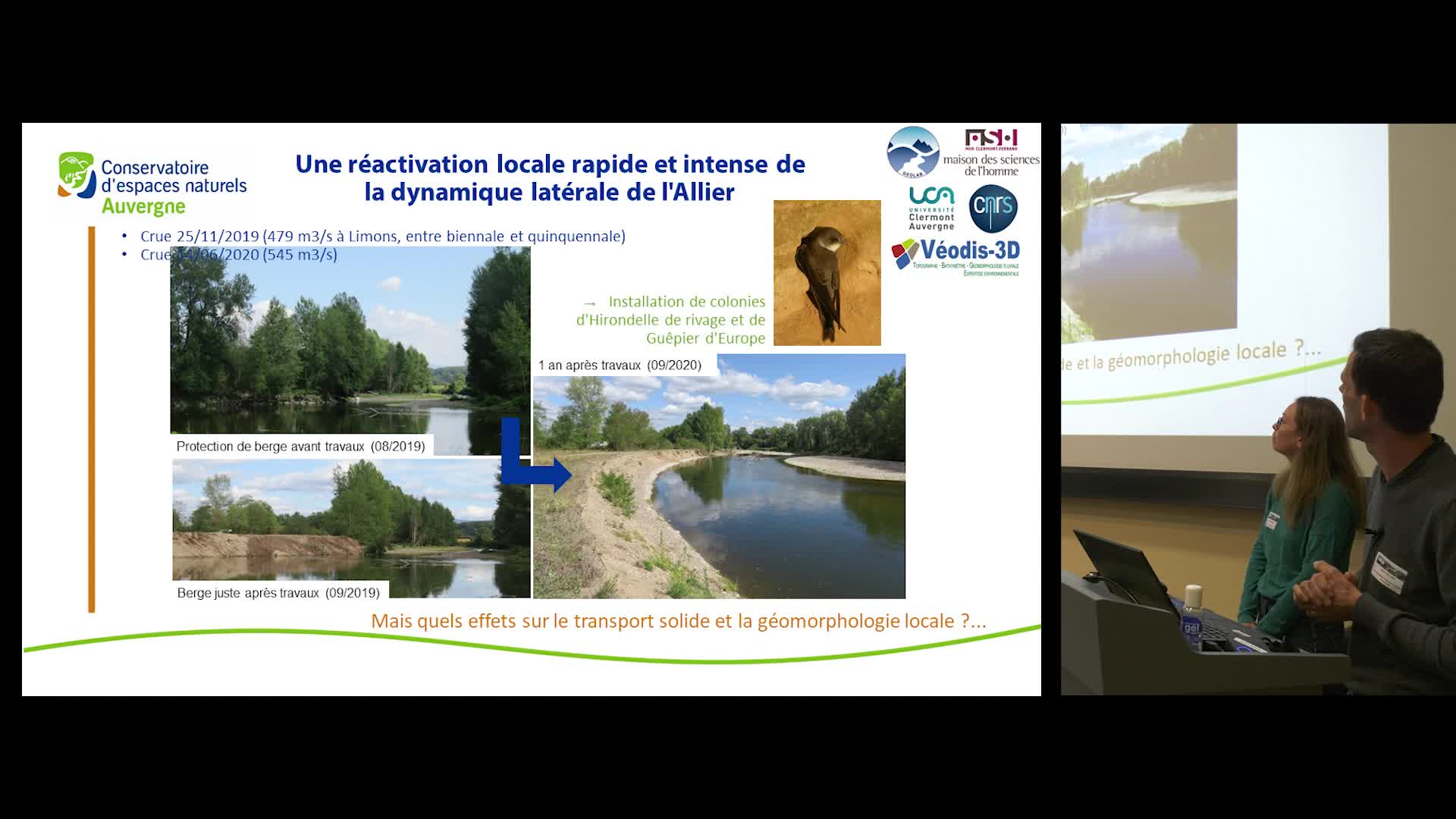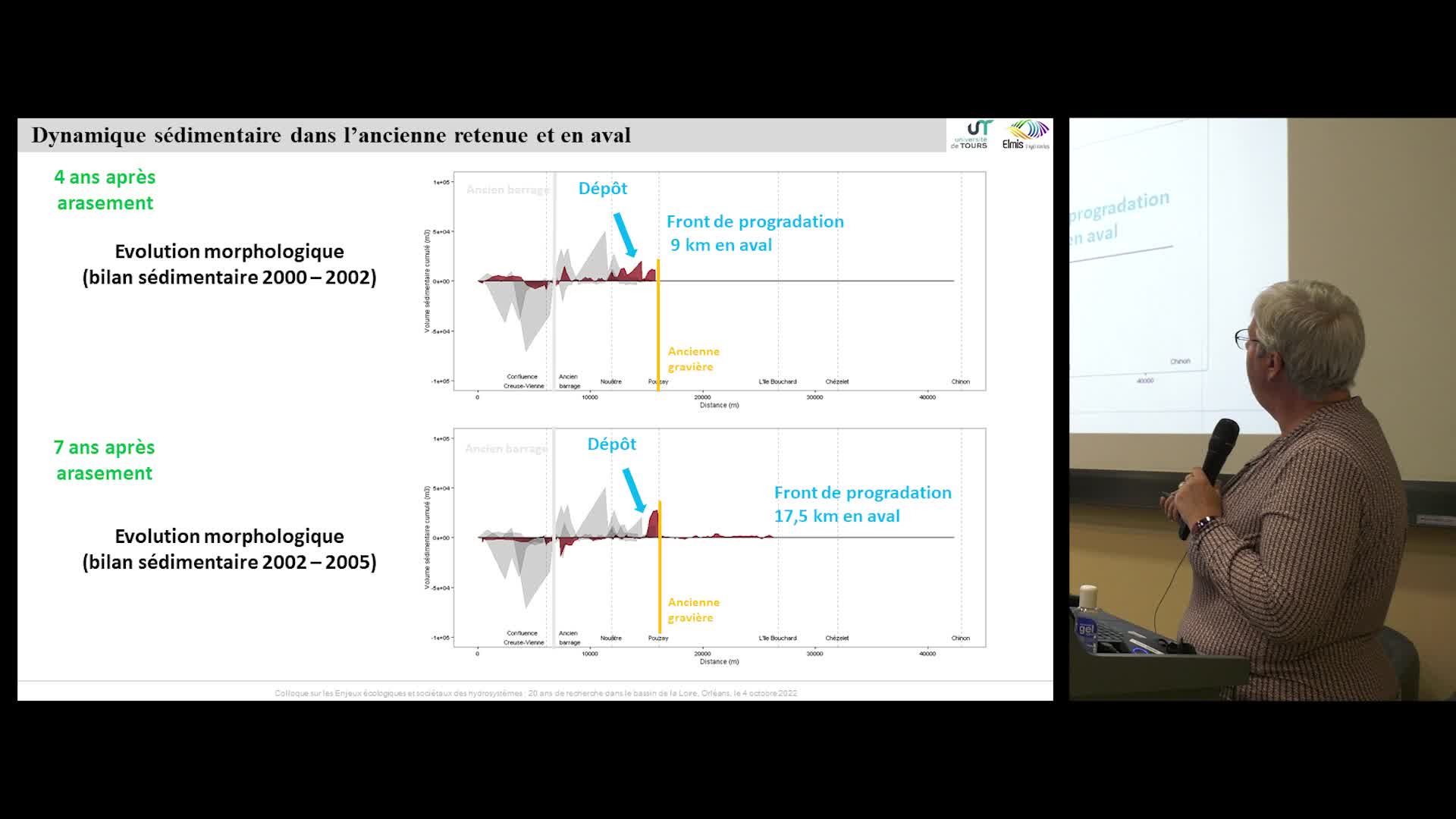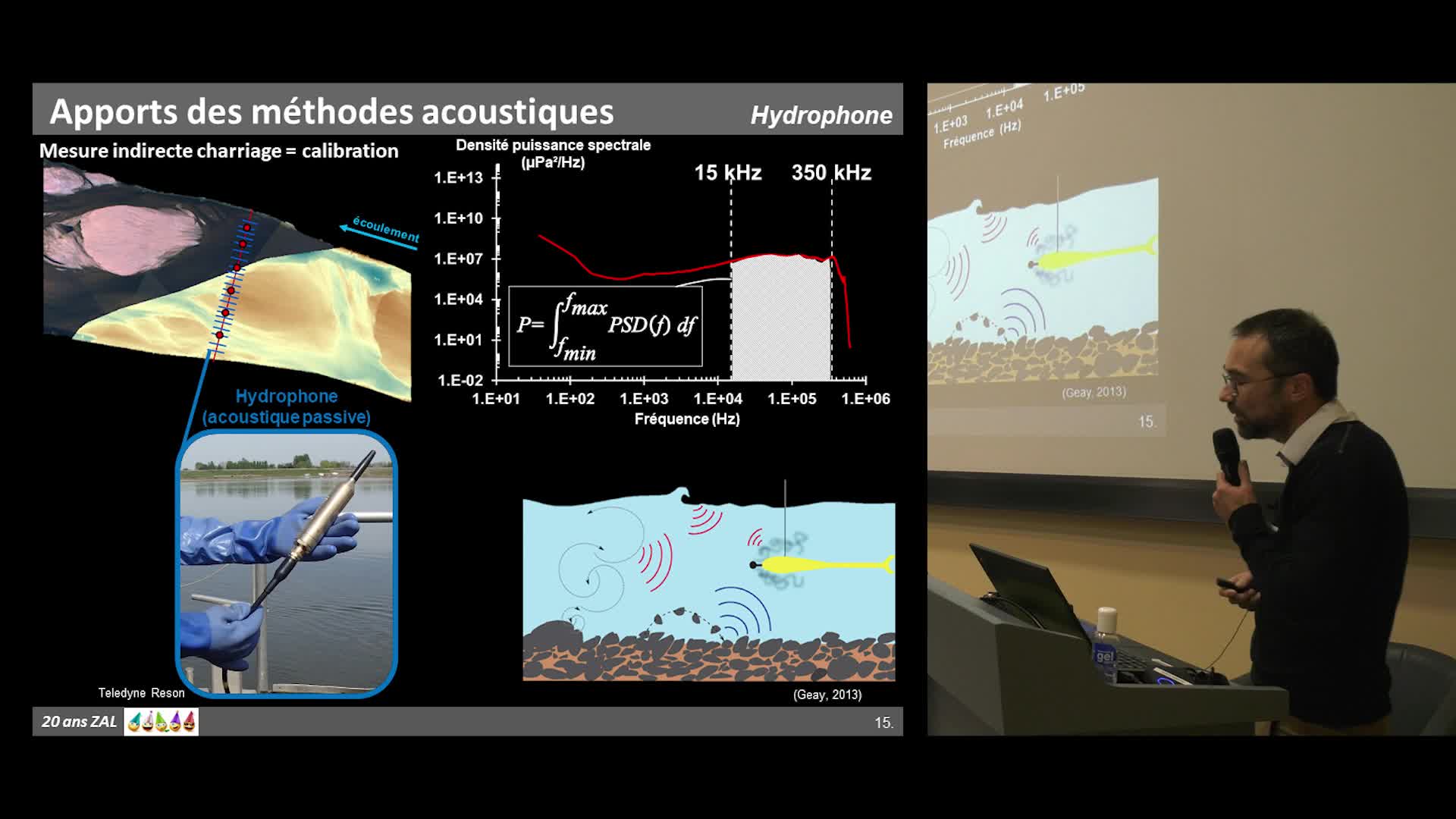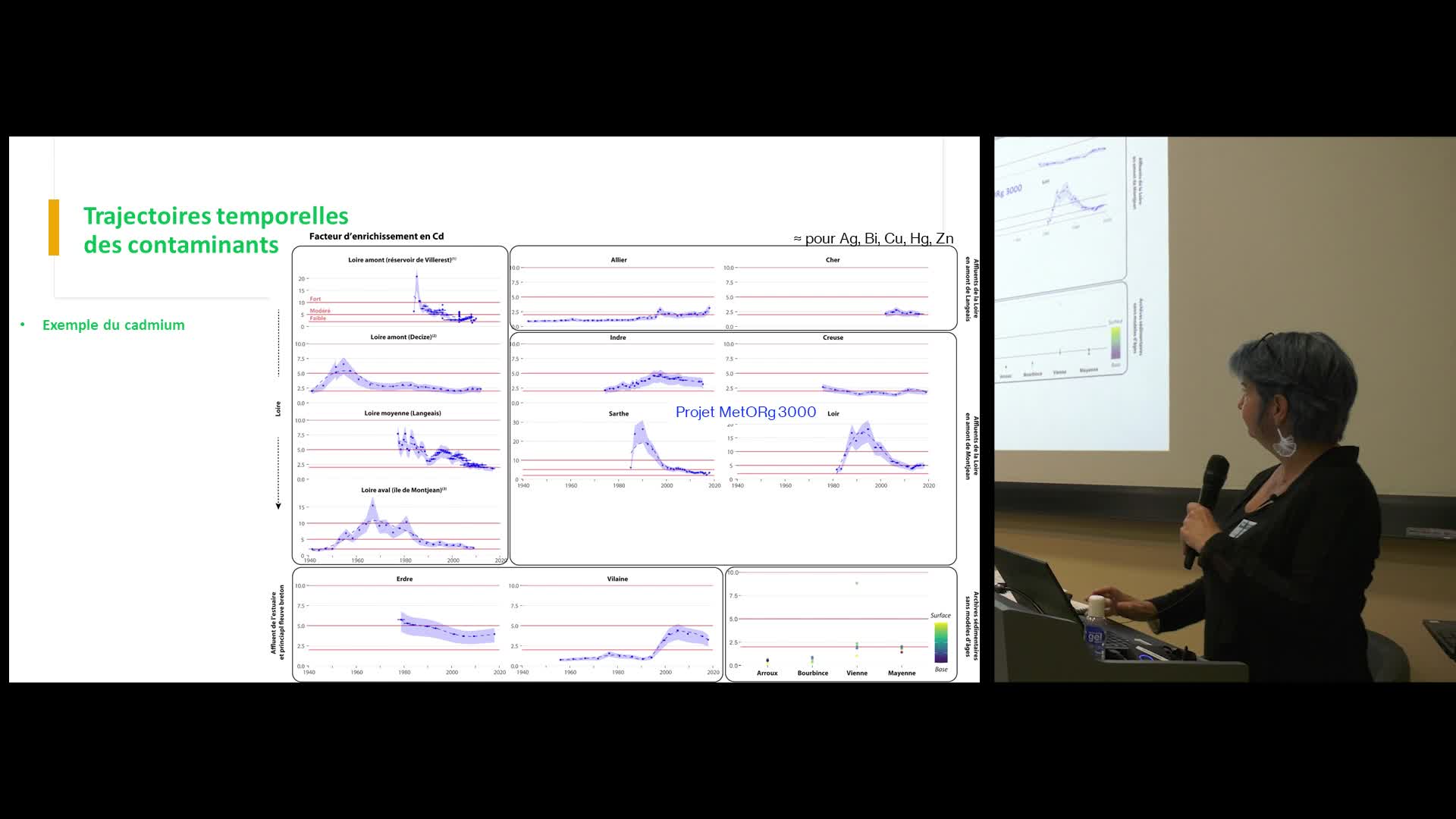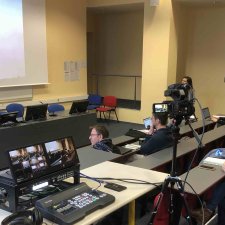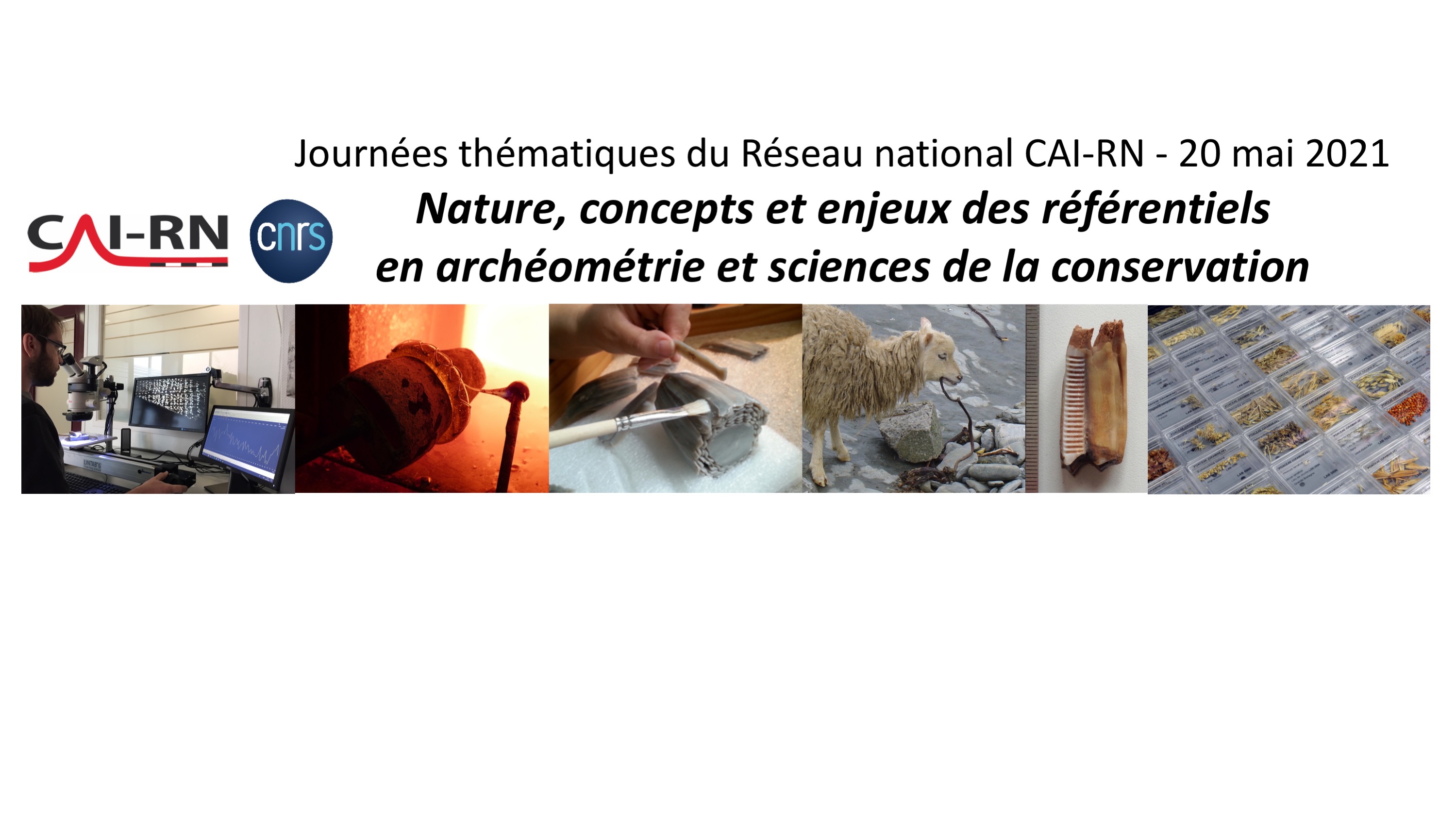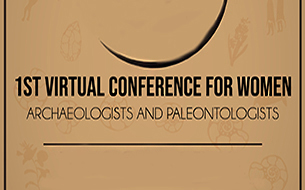Notice
Quantitative organic petrography and reconstruction of paleoenvironments in Alps / A. Simonneau
- document 1 document 2 document 3
- niveau 1 niveau 2 niveau 3
Descriptif
Contribution of quantitative organic petrography to the reconstruction of high altitude mountains paleoenvironments during the Holocene : a comparative study of Bramant & Blanc Huez proglacial lakes sedimentary infills (Grandes Rousses Massif, Western Alps, France). SIMONNEAU A. In "La construction des territoires montagnards : exploitation des ressources et mobilité des pratiques, organisé par les Laboratoires TRACES et GEODE (Toulouse) et le Centre d'Archéologie Préhistorique du Rhône aux Alpes (Valence, France). Université Toulouse II-Le Mirail, 8-11 octobre 2009. [Première journée.]
This report introduces results of lithological, optical and geochemical investigations made on lacustrine sediments from two high altitude proglacial lakes of Grandes Rousses massif (western Alps, France) : the lakes Blanc Huez and Bramant. The aim of this work is to reconstitute mountain paleoenvironments of the massif during the last 10 000 years (Holocene) and to put it in relation with high altitude human activities identified by archaeology. Lithological analyses show succession of organic and clastic sequences. Geochemical analyses of organic matter show that total organic carbon could be correlated with physical parameters like magnetic susceptibility, gamma densimetry or spectrocolorymetry. The entirety allows characterizing transitions between our facies. Optical analyses on organic sequences allow us to clarify composition, sources and geochemical conditions in basins. Thus, we underline fossil organic matter from Blanc Huez cathment in the Blanc Huez lacustrine sediments. It leads us to modify bulk dating. We created an age"depth model which allowed us to describe alpines mountain paleoenvironments since Younger Dryas (~12765 cal BP). Two glacial overhangs have been identified during Younger Dryas and since Upper Atlantic (~6800 cal BP). Organical facies of gytja were deposed at the beginning of Upper Dryas, and from Preboreal (~10200 cal BP) to Upper Atlantic. However, climatic variations have been identified during Subboreal (~5550 à 2590 cal BP) and can be correlated with human activities in the catchments in particular during Bronze Age. More studies in the massif would allow us to validate our results.
Dans la même collection
-
La construction des territoires montagnards : exploitation des ressources et mobilité des pratiques…
GalopDidierThe occupation and the exploitation of mountain environments, both during conquest and maximum demographic phases, or on the contrary, during desertification phases, differ in geographical
-
Human environmental interactions in high altitude zone between Neolithic and roman period / K. Walsh
WalshKevinA History of Transitions : human environmental interactions in the high altitude zone between Neolithic and roman period. Kevin WALSH. In "La construction des territoires montagnards : exploitation
-
L'agro-pastoralisme en milieu montagnard : l'apport des sépultures saisonnières / Patrice Courtaud
CourtaudPatriceL'agro-pastoralisme en milieu montagnard : l'apport des sépultures saisonnières. Patrice COURTAUD. In "La construction des territoires montagnards : exploitation des ressources et mobilité des
-
L'évolution végétale holocène sur le versant sud des Pyrénées occidentales / Maria-José Iriarte
IriarteMaría JoséL'évolution végétale holocène sur le versant sud des Pyrénées occidentales. Maria José IRIARTE. In "La construction des territoires montagnards : exploitation des ressources et mobilité des pratiques"
-
Prehistory of the Southern Appalachian uplands of Tennessee / Jay Franklin
FranklinJay D.Prehistory of the Southern Appalachian uplands of Tennessee. Jay FRANKLIN. In "La construction des territoires montagnards : exploitation des ressources et mobilité des pratiques", 2e International
-
A cultural landscape research in a mediterranean mountain (Barcelona-Girona) / A. Garcia Molsosa
Garcia MolsosaArnauA cultural landscape research in a mediterranean mountain area : the "Massis del Montseny project" (Barcelona-Girona) / A. GARCIA MOLSOSA. In "La construction des territoires montagnards :
-
The Hidram4000 project : land use, human occupation and lanscape changes in Spain / A. Curras
Currás DominguezAndresThe Hidram4000 project : land use, human occupation and lanscape changes in Spain during the last 3000 years. The Somolinos lake record (1240 M A.S.L.) : Siera de Pela, Guadalajara Province. Andres
-
Mountain anthropization in Alps : a multidisciplinary look in the Pygmalion program / F. Arnaud
ArnaudFabienMountain anthropization in Alps : a multidisciplinary look in the framework of Pygmalion research program. Fabien ARNAUD. In "La construction des territoires montagnards : exploitation des ressources
-
Exploitation of natural vegetal resources in chalcolithic areni-1 cave (Armenia) / R. Hovsepyan
HovsepyanRomanExploitation of natural vegetal resources in chalcolithic areni-1 cave settlement (Armenia). Roman HOVSEPYAN ovsepyan, Roman. In "La construction des territoires montagnards : exploitation des
-
Territorial practices, landscape dynamics and mobilities in a french mountain / P. Allée, Y. MIras
AlléePhilippeMirasYannickTerritorial practices, landscape dynamics and spatio-temporal mobilities in a french medium mountain : integrated approach combining archaeological and paleoecological inverstigations performed in the
-
Wildfires in european alps : frequent yesterday, rare today, frequent tomorrow ? / W. Finsinger
FinsingerWalterWildfires in european alps : frequent yesterday, rare today, frequent tomorrow ?. Walter Finsinger. In "La construction des territoires montagnards : exploitation des ressources et mobilité des
-
Exploitation des vallées andorranes depuis le Néolithique/ J.-M. Palet Martinez, H. Orengo Romeu
Palet i MartínezJosep M.Orengo RomeuHèctor A.L'exploitation des ressources des vallées andorranes du Madriu-Perafita-Claror et de la chaîne du Cadi (Pyrénées orientales) depuis le Néolithique à partir des données archéologiques et
Sur le même thème
-
L’interdisciplinarité au défi du terrain : regards réflexifs sur l’EFR « Santé d’un socio-écosystèm…
L’École de formation à la recherche (EFR) « Santé d’un socio-écosystème minier » organisée par les Communautés de savoirs Géoressources et durabilité » et « Terres et sols » et l’université Félix
-
Approvisionner le feu en bois. Regard anthracologique sur l’exploitation du Bois des Lens et les us…
VaschaldeChristopheChardonneau-HenneuseJulienApprovisionner le feu en bois. Regard anthracologique sur l’exploitation du Bois des Lens et les usages du combustible par les potiers de l’Antiquité tardive.
-
Restauration de la dynamique fluviale de l'Allier sur l'Ile des Cailloux
J. Saillard (CEN Auvergne), Arfeuillère (CNRS, GEOLAB, Université Clermont Auvergne), Restauration de la dynamique fluviale de l'Allier sur l'Ile des Cailloux
-
Impacts de l'arasement du barrage de Maisons Rouges (France) sur la dynamique sédimentaire et la bi…
N. Richard (CETU, Elmis, CITERES, Université de Tours), Ph. Juge (CETU, Elmis, Université de Tours), S. Rodrigues (CITERES, Université de Tours), Impacts de l'arasement du barrage de Maisons Rouges
-
Vers une optimisation de la mesure des flux solides de fond en Loire : apports croisés de l'aDcp et…
RodriguesStéphaneJ. Le Guern, (GINGER BURGEAP R et D et CITERES, Université de Tours), S. Rodrigues (CITERES, Université de Tours), Th. Geay (GINGER BURGEAP R et D), S. Zanker (EDF, Division Technique Générale), A.
-
Trajectoires des contaminants historiques enregistrés dans les sédiments du bassin de la Loire : re…
Grosbois-BacchiCécileC. Grosbois (GéHCO, Université de Tours), E. Dhivert (GéHCO, Université de Tours), L. Mondamert (IC2MP – Université de Poitiers), J. Labanowski (IC2MP – Université de Poitiers), Marc Desmet (GéHCO,
-
ARCHISS - Le Lac d’Issarlès : archives environnementales, volcaniques et sismiques des 60 derniers …
DefiveEmmanuelleEmmanuelle Defive, MCF en Géographie physique, Géomorphologie (UCA) et membre du laboratoire GEOLAB (UMR 6042), présente les principaux résultats scientifiques du projet ARCHISS.
-
Alfredo Mayoral - « Gergovie : nouvelles recherches géoarchéologiques et paléoenvironnementales »
Le jeudi 16 septembre 2021, à 20h30, sur Facebook, Page Musée de Gergovie, Alfredo Mayoral, géoarchéologue, à l'Institut Catalan d’Archéologie Classique et à GEOLAB (UMR 6042 CNRS / UCA UNILIM), a
-
M. DJAMALI et M. MASHKOUR, Réflexions sur la contribution des coprolithes de hyènes modernes comme …
Réflexions sur la contribution des coprolithes de hyènes modernes comme référentiel pour les reconstitutions paléoenvironnementales. Morteza DJAMALI1, Marjan MASHKOUR2 1-CNRS, IMBE (morteza
-
"Ouranopithecus macedoniensis" (late Miocene, Greece): analysis of mandibular fragments using …
IoannidouMelaniaOuranopithecus macedoniensis (late Miocene, Greece): analysis of mandibular fragments using 3D geometric morphometrics / Melania Ioannidou, in colloque "1st Virtual Conference for Women
-
What is shaping the brain? A perspective on brain size evolution in carnivorans / Margot…
MichaudMargotWhat is shaping the brain? A perspective on brain size evolution in carnivorans / Margot Michaud, in colloque "1st Virtual Conference for Women Archaeologists and Paleontologists. Nouveaux
-
A transdisciplinary approach to reconstruct the Nilotic socio-ecosystem in Luxor west bank during t…
NicatoreGiuliaA transdisciplinary approach to reconstruct the Nilotic socio-ecosystem in Luxor west bank during the Ptolemaic period (3rd-1st centuries BC.) / Giulia Nicatore, in colloque "1st Virtual Conference


